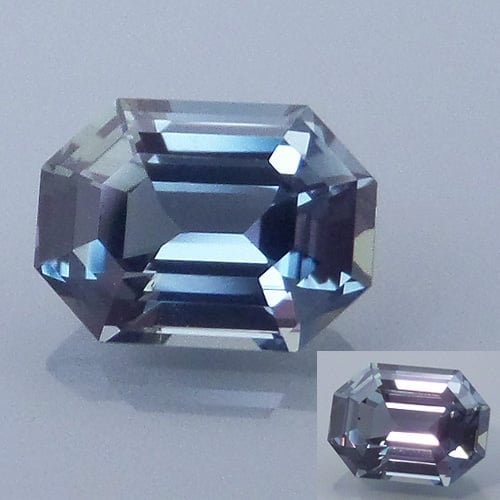Color Change Sapphire Value, Price, and Jewelry Information
Color change sapphires are those that change color between light sources.
By International Gem Society, updated on
Start an IGS Membership today
for full access to our price guide (updated monthly).Color Change Sapphire Value
Color change sapphires are those that change color between light sources.
International Gem Society
Related Articles
Ruby and Sapphire Origins
Ruby and sapphire origins greatly affect the values of these prized gems. Learn where these stones occur and how inclusions...
Read More
Black Diamond Value, Price, and Jewelry Information
Black is a color that can say a lot. Wearing black diamond jewelry communicates a sense of unique strength and...
Read More
Chameleon Diamond Value, Price, and Jewelry Information
Professionals will tell you never to trust a trade name used to describe the appearance of a fancy colored diamond....
Read More
Gray Diamond Value, Price, and Jewelry Information
Diamonds with a pure gray hue are a rare treasure indeed. More often, gray is mixed with blue or violet...
Read More
Latest Articles
Morganite Buying Guide
Complete morganite buying guide covering the 4 Cs, treatments, and pricing. Learn how to choose the perfect pink beryl gemstone...
Read More
How Do Amethysts Form?
Discover the fascinating geological journey that transforms colorless quartz into vibrant purple amethyst through volcanic processes, iron impurities, and natural...
Read More
Rhodizite Value, Price, and Jewelry Information
Rhodizite is tough enough to make an excellent jewelry stone. However, it's quite a rare mineral. Faceted specimens are extremely...
Read More
Pearl Treatments and Enhancements
Did you know that routine pearl treatments are the most common enhancements in the gem trade? Learn more about these...
Read More
Never Stop Learning
When you join the IGS community, you get trusted diamond & gemstone information when you need it.
Get Gemology Insights
Get started with the International Gem Society’s free guide to gemstone identification. Join our weekly newsletter & get a free copy of the Gem ID Checklist!
